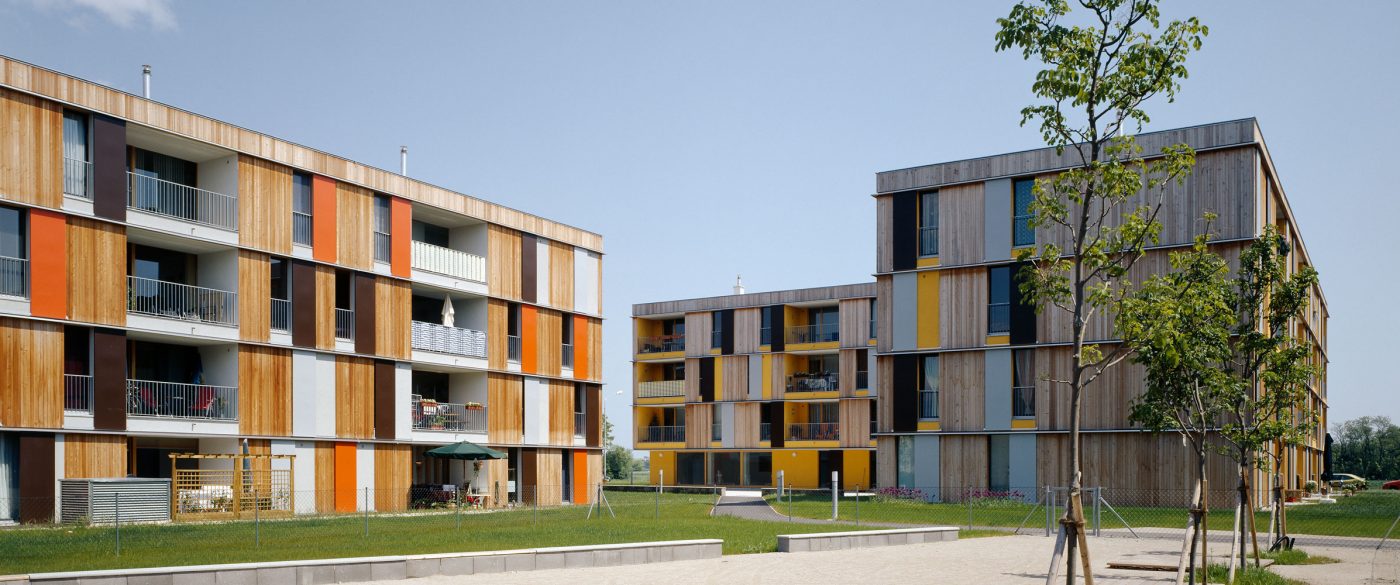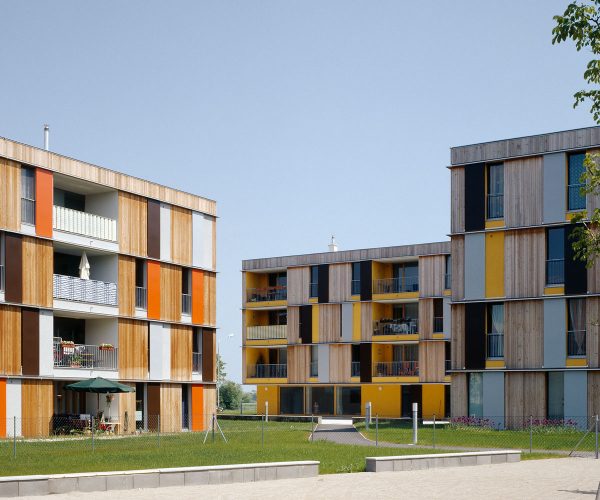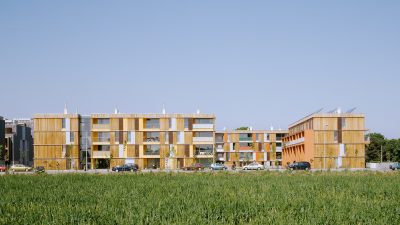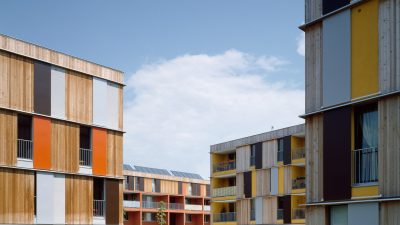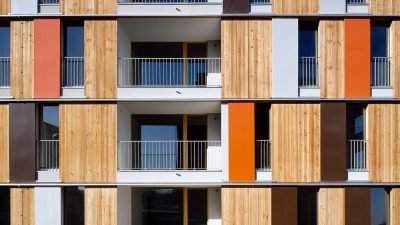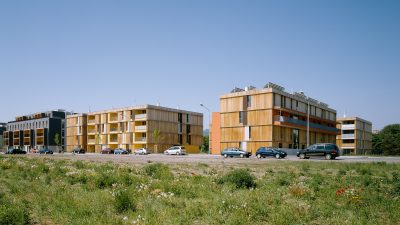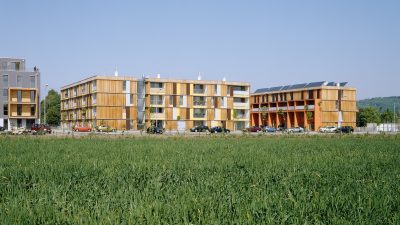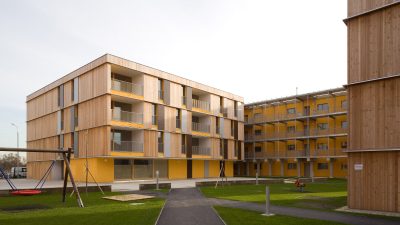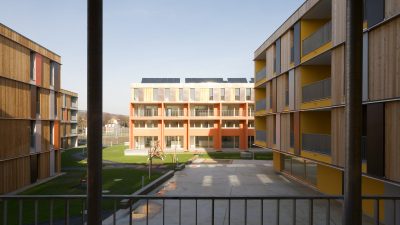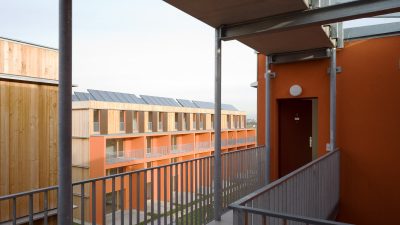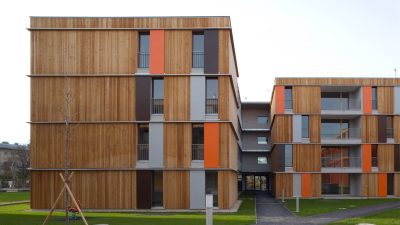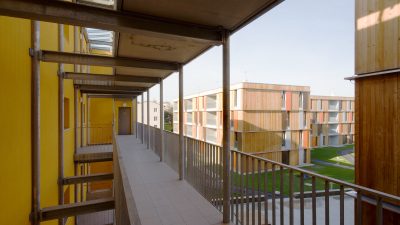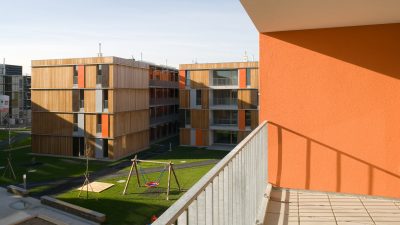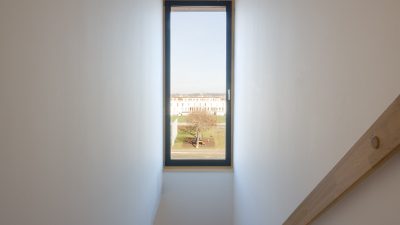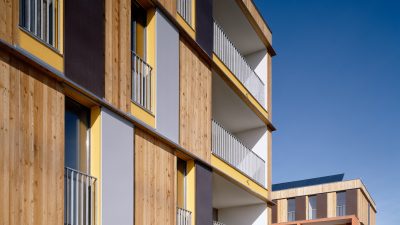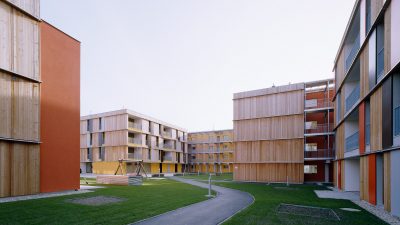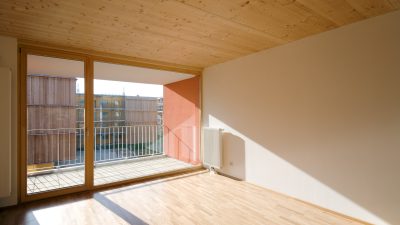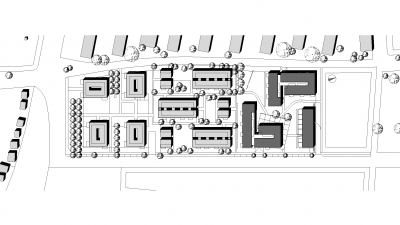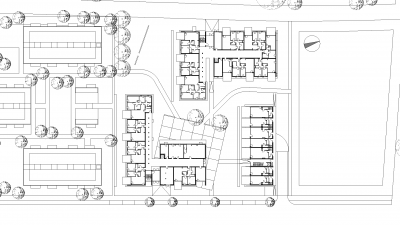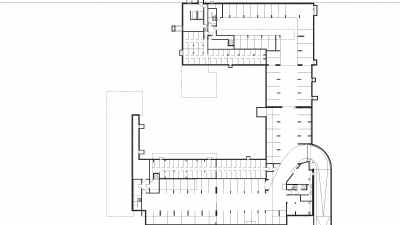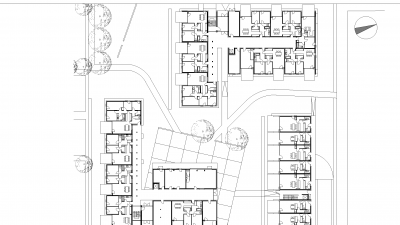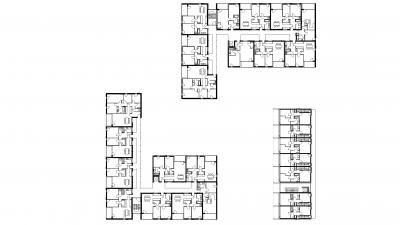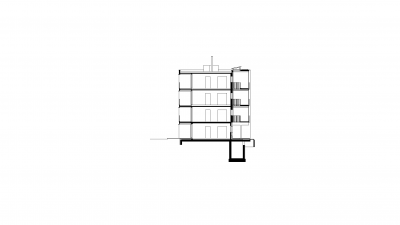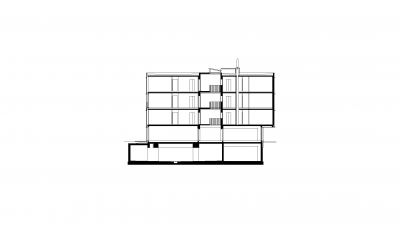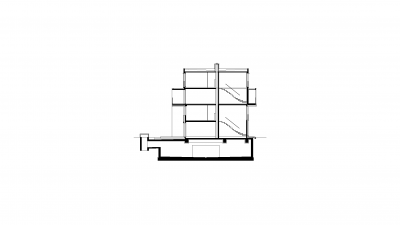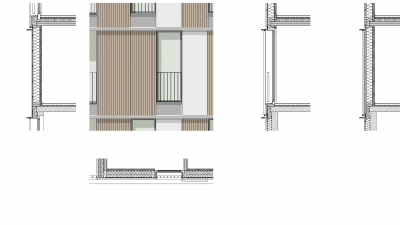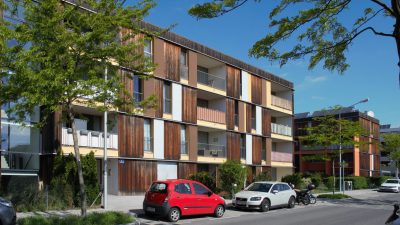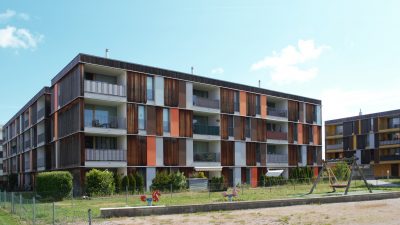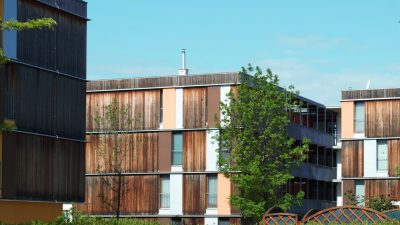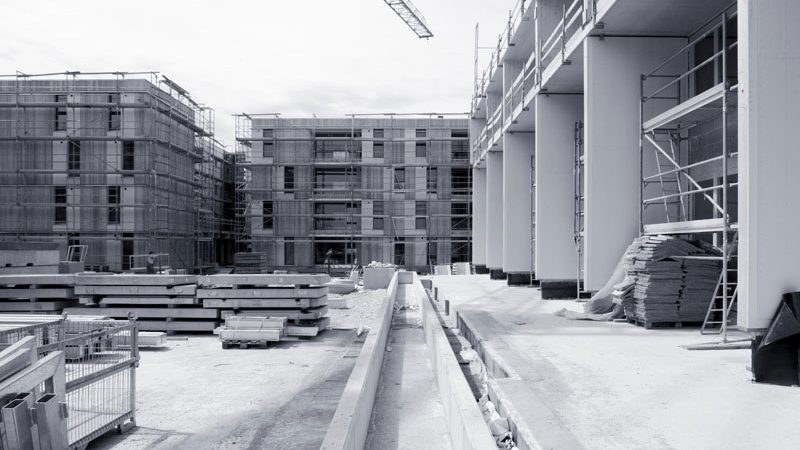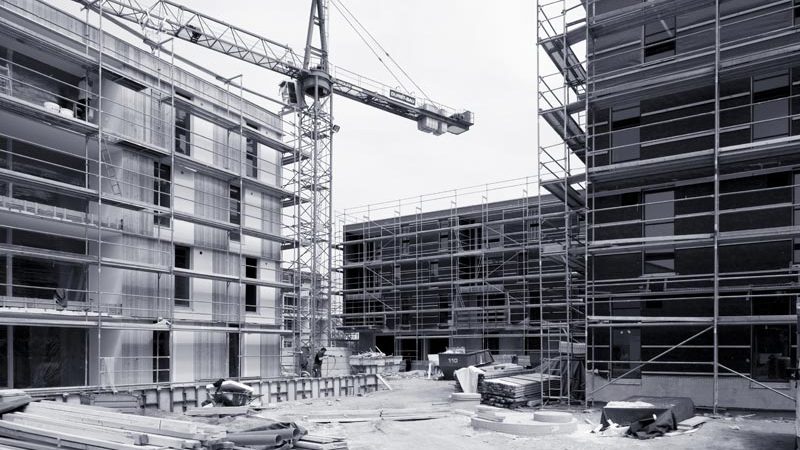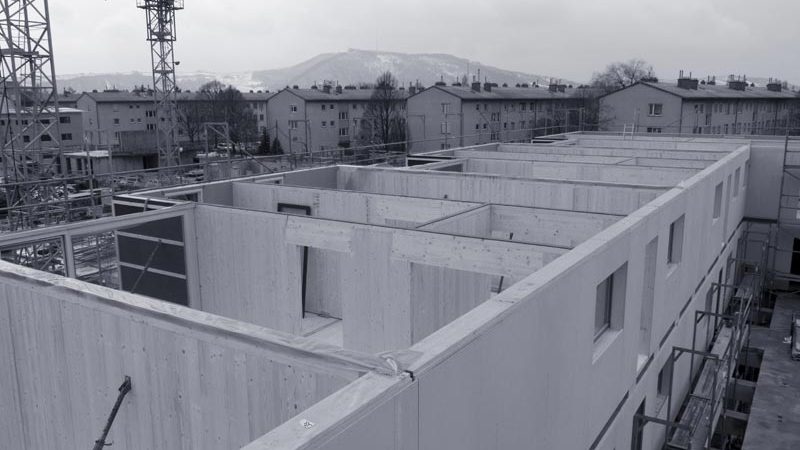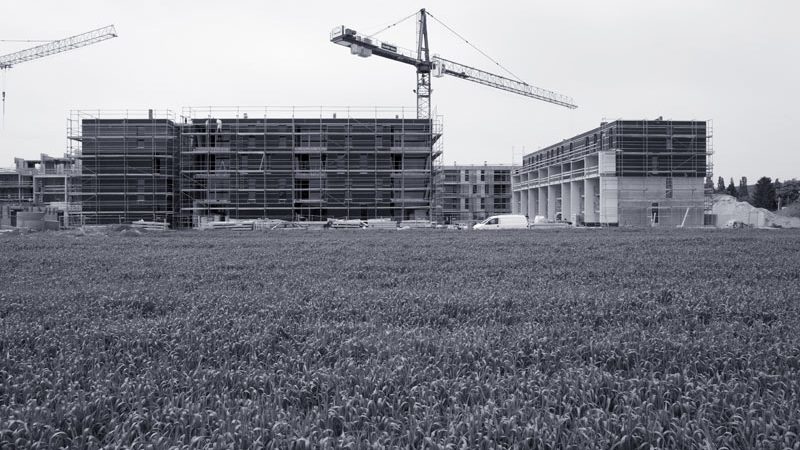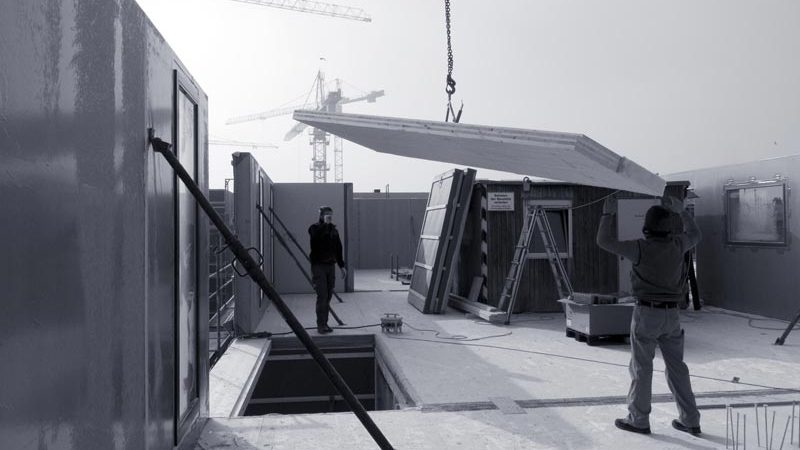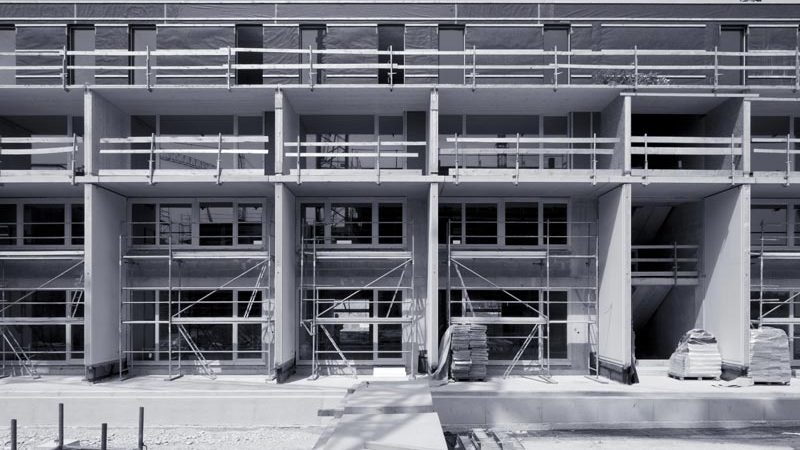Project Information
Cooperation
Johannes Kaufmann Architektur, Reuthe
DI Christoph Dünser
Martin Rümmele
Builder-Owner
BWS Gemeinnützige Allgemeine Bau-, Wohn- und Siedlungsgenossenschaft, Wien
Location
Wien
Completition
2006
Project facts
Bauteil A1 + A2 + A3
n.b.ar. 7.617,15 m², GFA 8.170,50 m²,
GBV 23.755,141 m³
Energy 36,6 kWh/m²a
Project Phases
Ausführung
Wettbewerb
Rights
Text Otto Kapfinger "Hermann Kaufmann Wood Works",
Translation Bronwen Rolls
Photo Bruno Klomfar
- Structural Engineering
merz kley partner ZT GmbH, Dornbirn - Heating Ventilation and Sanitary Planning
Pesek Planungsbüro, Felixdorf - Electronics Planning
s.d. & engineering, Wien - Building Physics/Acoustics
Holzforschung Austria, Wien - Fire Protection Planning
Institut für Brandschutztechnik und Sicherheitsforschung, Linz - Green Space Planning
Plansinn GmbH, Wien - Colour Pallet
Erich Wiesner, Berlin
Mühlweg, Wien
In 2003, the Vienna Land Procurement and Urban Renewal Fund invited tenders for the “timber and mixed-timber construction” of a residential complex with 250 apartments. In the context of the “Climate Protection Program of the City of Vienna”, the city wanted to demonstrate the feasibility of energy efficient timber construction for affordable housing in urban areas. Amendments to the local building regulations paved the way for multi-story timber structures to be subsidised within Vienna’s social housing program.
»Nowhere in Europe has such a project been implemented. By combining experienced experts into the planning, a showcase of modern, ecological timber construction emerged in cooperation with the building owners and building authorities: pure wooden buildings over 4 storeys next to mixed timber construction, passive houses next to low-energy buildings, wooden facades next to plaster facades. But they all have one thing in common – a commitment to a good cause.«
Univ.-Prof. Arch. DI Hermann Kaufmann, DI Johannes Kaufmann
Selected from the public competition was the proposal from Johannes and Hermann Kaufmann. Tit was a site-specific design that linked the existing residential buildings from the 1960s to the west, with the adjacent green space to the east.
The proximity to the plot boundaries, together with the arrangement of the buildings create an inner courtyard area which, despite its clear structure, is open to its surrounding environment, making the transition to the landscape of the surrounding Marchfeld area more fluid. The open space flows evenly through the residential complex and forms a tranquil, sunlit playground. The apartments – oriented to the south and the west – are housed in four-story wings and feature large loggias that provide privacy for the residence.
To keep with the scale of the surrounding structures, the architects refrained from building an additional rooftop level. The diversity of the structural characteristics creates interesting and functional angles, variations in the apartment’s sizes, and a rich and engaging prospective both inside and out.
The building entrances connect to the courtyard on all sides. All three upper floors are made of large prefabricated, laminated timber panels, while the basement is built of concrete and brick. The vertical loads are carried by insulated apartment partition walls and by the interior walls. Sound-absorbing floorplates are designed as continuous beams and extend above these transverse walls; their underside forms the finished ceilings.
The long facades, which are broken up by numerous openings, are constructed out of highly insulated framed panels. On the inside they are covered in plasterboard and on the outside, with rear-ventilation, there is larch board cladding. The untreated facades are an external expression of the pure wooden structure of the building, and are paired with coloured shutters. Thanks to the flush mounted surfaces the timber facades will weather evenly; turn grey and, together with the shutters and loggias, create an even and deep palette of colours.
In order to meet the required fire safety standards, fire tests were conducted using prototypes of the timber facades. Instead of using expensive hard woods, through the use of a 15 cm fire protective overhang between floors. These horizontal, wooden string courses are wrapped in sheet metal and serve as the supports and guides for the sliding shutters. The wooden cladding of the loggias is not carried around the corner to cover the surfaces of the walls, as experience has shown the weathering of such details produced extreme contrasts on the exterior surfaces.
Another novelty is the use of weatherproof, prefabricated, laminated timber elements, in order to ensure the construction quality on the building site. The exterior access balconies are designed as steel structures and are positioned in front of the timber structure. They are equipped with non-flammable decks, made of precast concrete. The projected heating energy consumption of 36 kWh⁄ m² a per annum conforms with the energy efficiency guidelines. About half of the hot water is produced using a solar heating system. The generated energy savings correspond to the heating energy consumption of nine highly insulated single family houses.
Projektpläne
Bausfotos
Public
- Holzbaupreis Vorarlberg
2007 (Export) - Gebaut 2006
2007 (Auszeichnung) - best architects 08
2007 (Auszeichnung)
- Mühlweg Wien – Brandschutztechnische Ausführung von Holzfassaden
ZN Z-188, Pro Holz Arbeitsheft 8/06, Sept. 2006, S. 19 - Mit Holz auf dem grünen Weg
ZN Z-137, Koch Robert, Wohnen + Plus, 01/2007, S. 18-19 - Wohnsiedlung am Mühlweg, Wien
ZN Z-138, Boeckl Matthias, architektur aktuell, 06/2007, S. 64-81 - Wohnbebauung Mühlweg, Wien
ZN Z-165, Informationsdienst Holz, Tagungsband "Holzbau in der Stadt" - Mühlweg Wien
ZN Z-164, l´architettura naturale, 40/41, Sept./Okt. 2008, S.44-51 - Mühlweg, Wien
ZN B-042, best architects 08 award - Mühlweg, Wien
ZN B-043, Roland Burgard, Standards der Zukunft - Wohnbau neu gedacht - Mühlweg, Wien
ZN B-046, Best of Austria, Architektur 2006_07, S. 101 - Mühlweg, Wien – Sustainable Building
ZN B-049, Gianluca Minguzzi, Architettura sostenibile, S. 21-26 - Mühlweg, Wien
ZN B-047, typologie + / innovativer Wohnungsbau, S.354-357 - Mühlweg, Wien
ZN B-048, Chris van Uffelen, Ecological Architecture, S. 272-275 - Wohnanlage Mühlweg Wien
ZN B-058, Gebaut: 2005-2010; Ausstellung; S. 84-85 - Wohnanlage Mühlweg Wien, Bauteil A
ZN B-059, Fassaden aus Holz, S. 134-135 - Mühlweg Wien – Ideenexport
ZN B-054, Ulrich Dangel, Nachhaltige Architektur in Vorarlberg, S. 142-149 - Mühlweg Wien
ZN Z-185, Kauppalehti Optio 19/2010, S. 90-91 - Mühlweg, Wien
ZN B-055, Form&Energie, Architektur in_aus Österreich, S.80-81 - Wohnanlage Mühlweg Wien
ZN B-056, Best of Austria, Architektur 2008_09, S. 55 - Ensemble d´habitation Mühlweg à Vienna, Autriche
ZN Z-199, Sequences Bois, Nr. 88, Jän. 2012, S.20-23 - WA Mühlweg, Wien
ZN B-066, Urbaner Holzbau, S. 194-195
